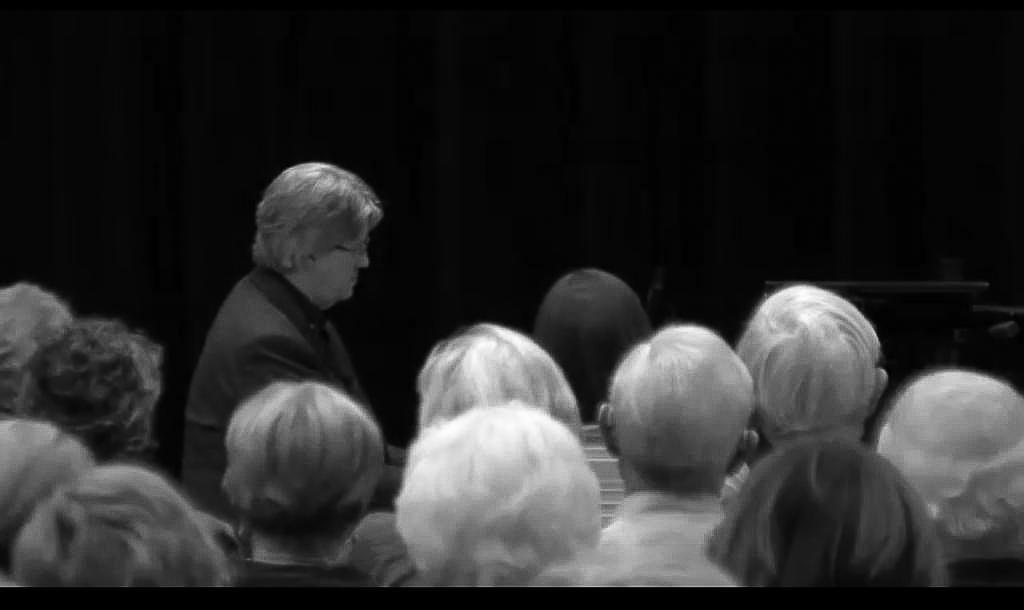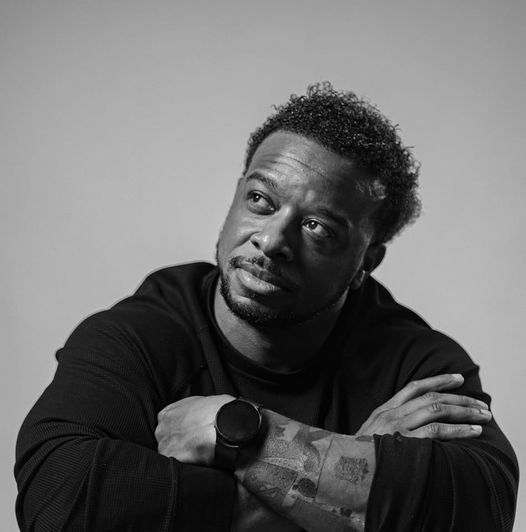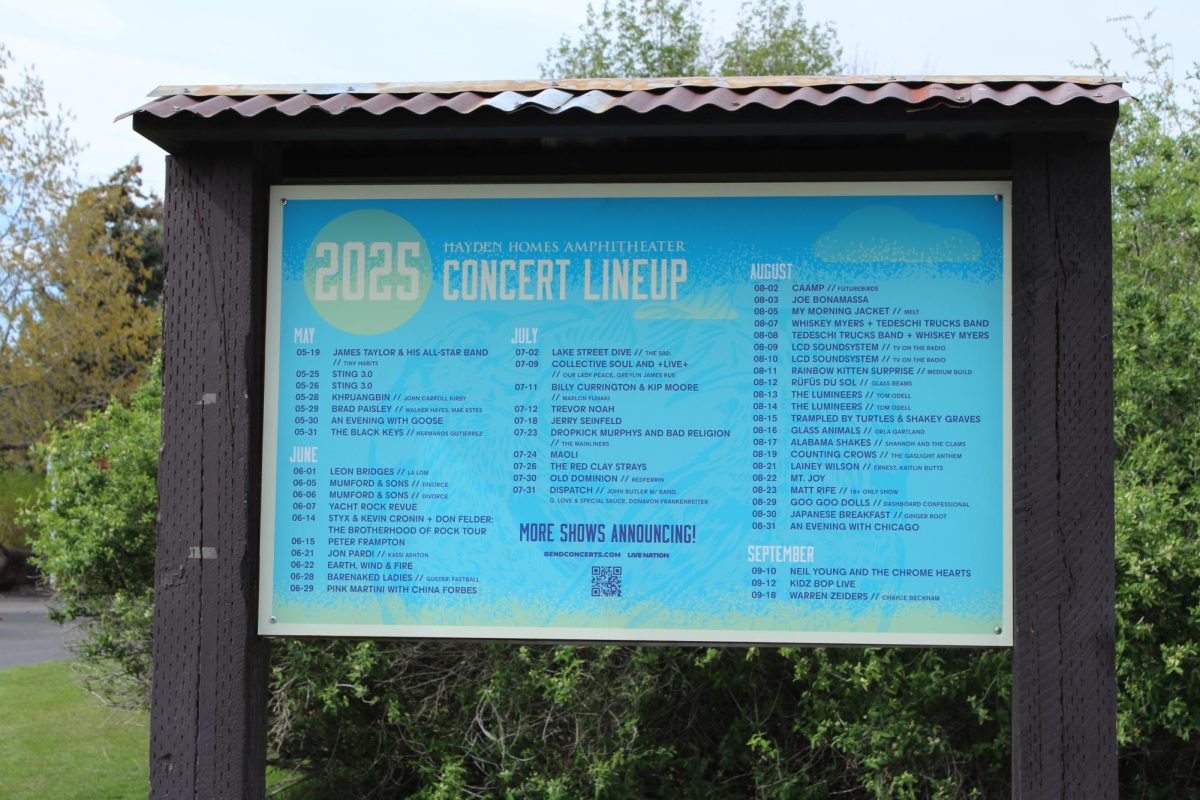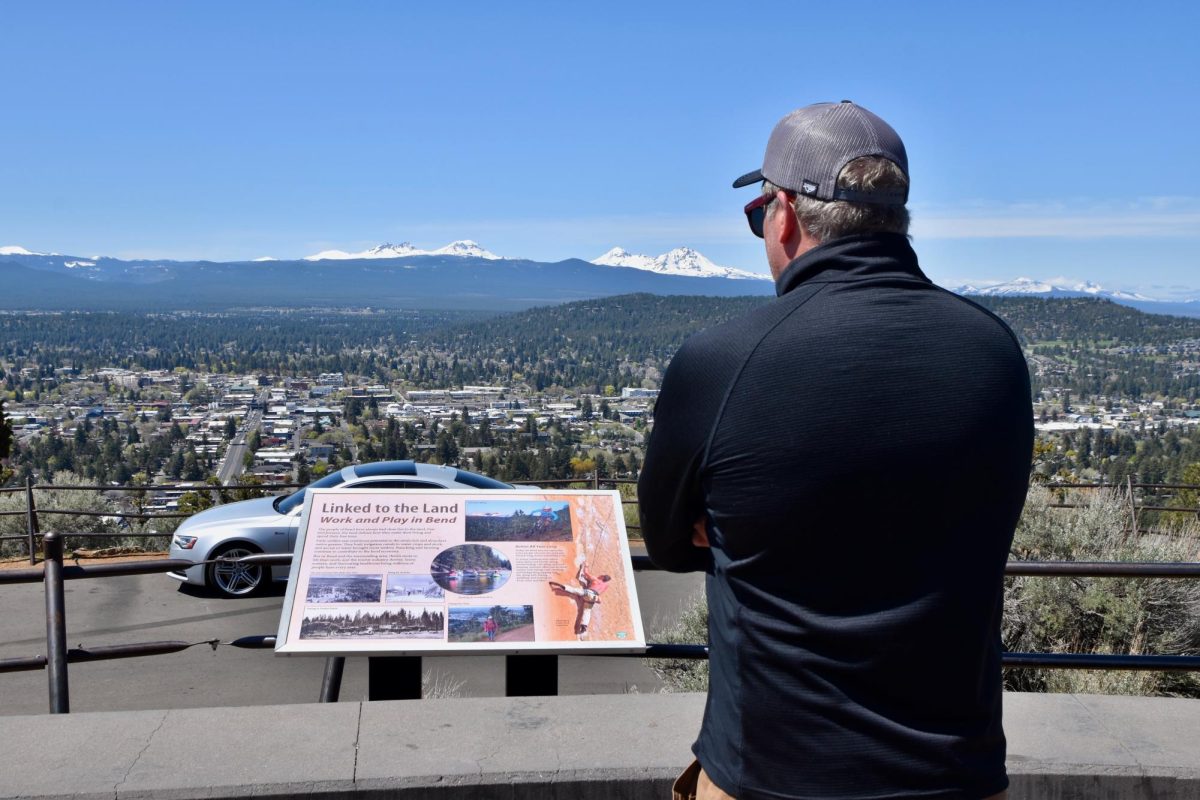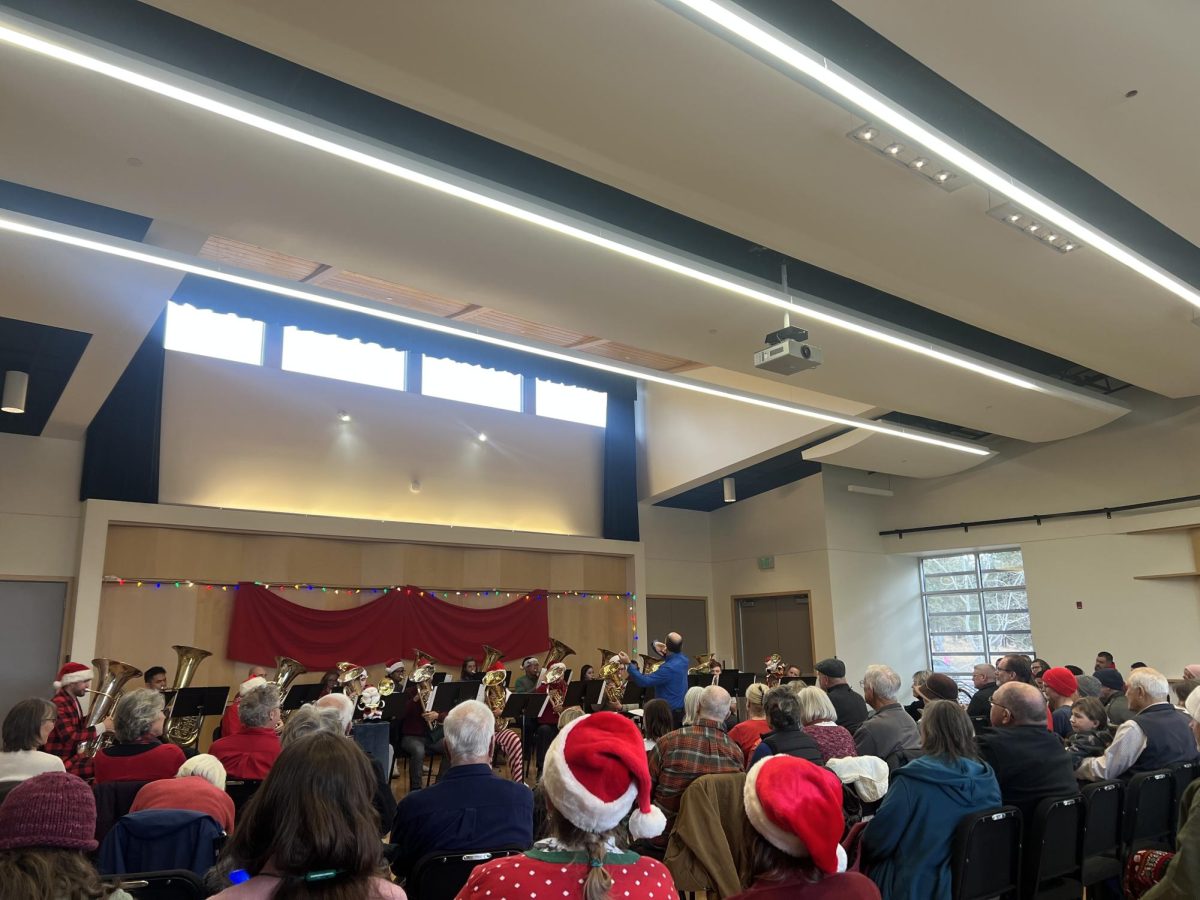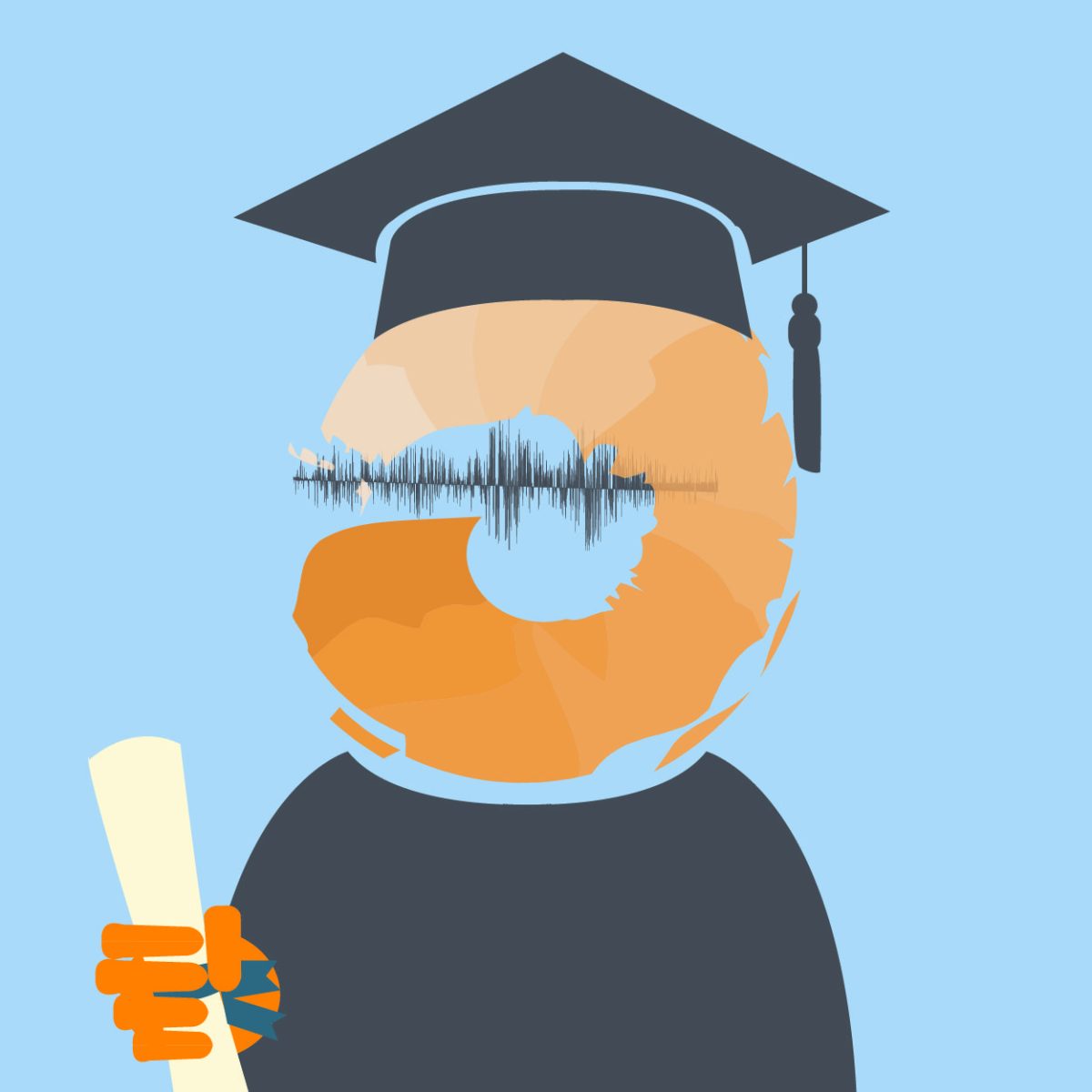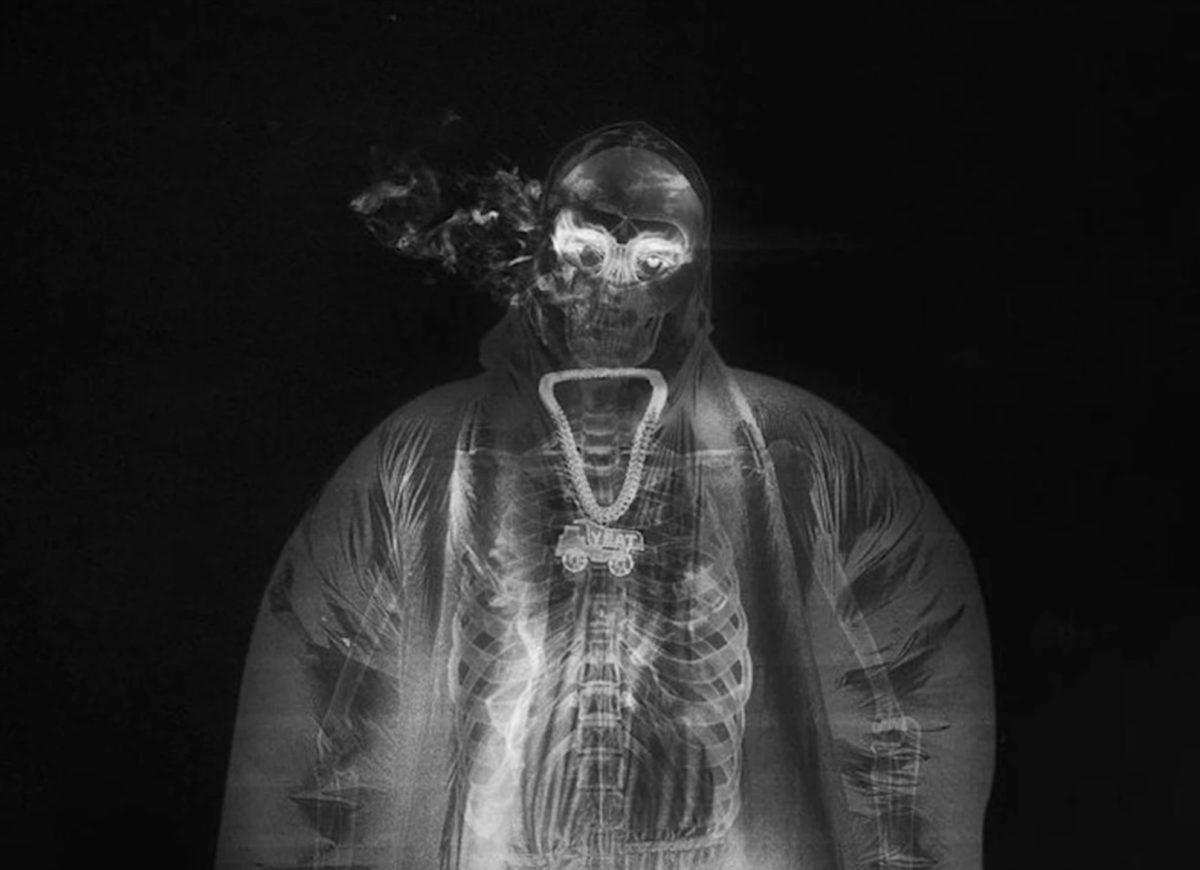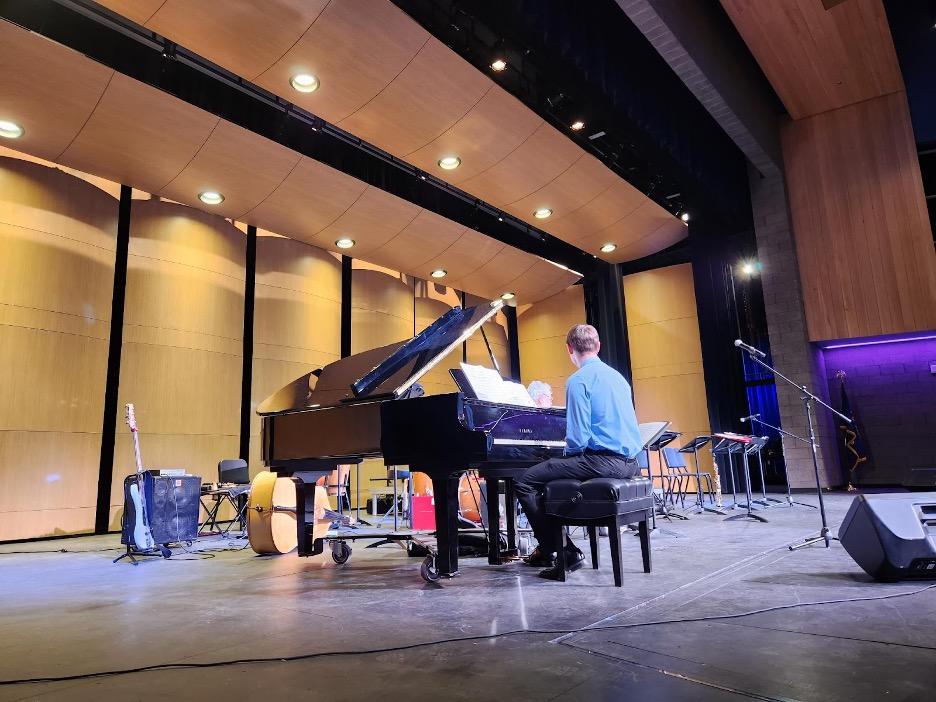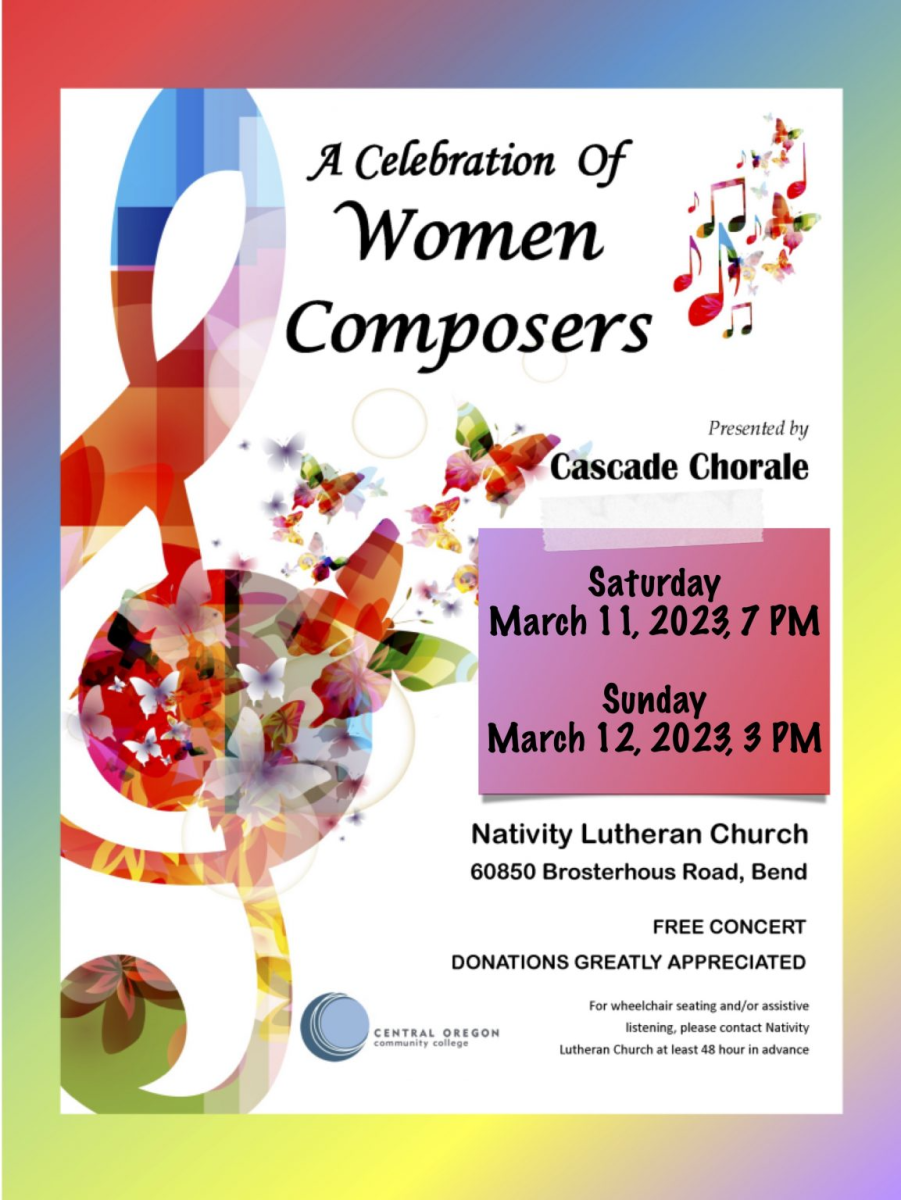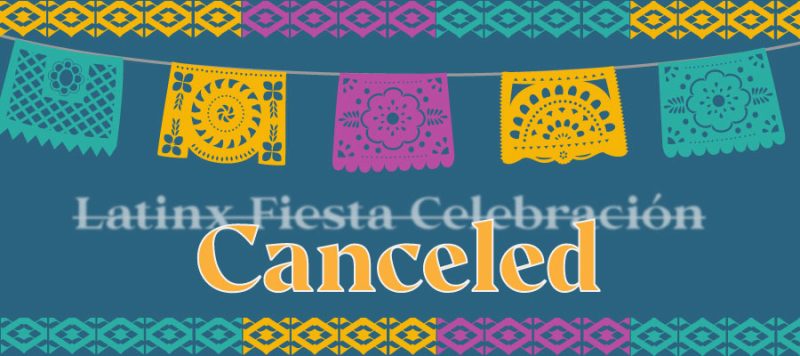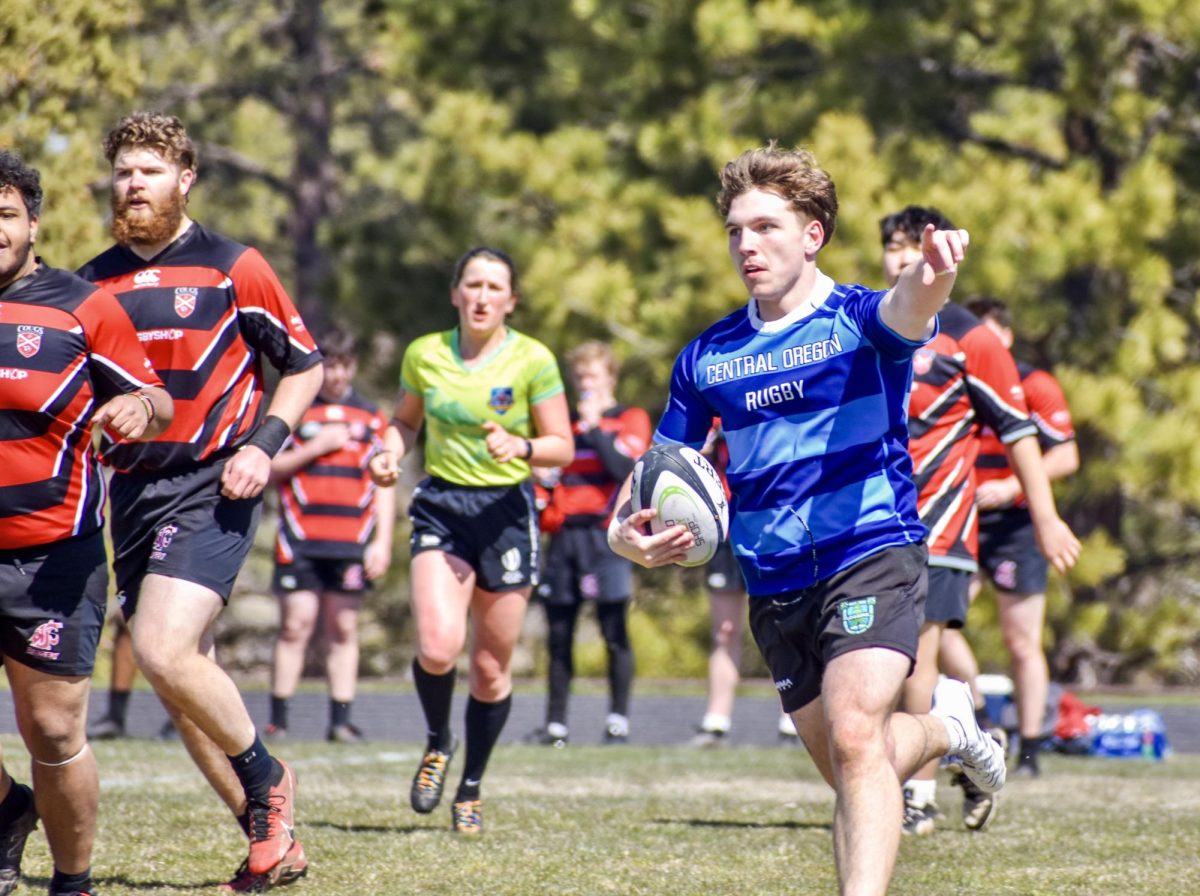Within the power of music, we have always known its extraordinary rhythmic ability to influence human nature in ideas, inspiration, and emotions since the dawn of antiquity. However, can the power of music do more than just influence the thoughts within the human psyche? More specifically, can it also influence the development, aging, and the healing within the brain?
Neuroscientist Dr. Larry Sherman answered these questions the night of Oct. 18, 2022, during an interactive musical-science presentation called “Every Brain Needs Music,” at Willie Hall in the Coats Campus Center. Using a mix of his own piano performance and Power Point lecture, he captivated the audience through acoustic and visual learning. Accompanying him were members of the Central Oregon symphony, as well as a vocalist. Dr. Sherman even encouraged participation from the audience to join the vocalization demonstration, connecting the brain to music.
A quick background about Dr. Larry Sherman, Ph.D. — He is a professor at the Oregon National Primate Research Center at Oregon Health and Science University. He is also the president of the Oregon Chapter of the Society for Neuroscience. He has served on many national scientific review panels for the National Institutes of Health along with the Congressionally Directed Medical Research Programs.
So how does music help brain development? Well, do you remember “Twinkle, Twinkle, Little Star,”? or better yet; the “ABC” song? These types of songs introduced in early childhood where our first form in learning the vocalization in communication.
“Mothers all over the world, no matter what culture you are from, instinctually sing to their children,”
says Dr. Sherman.
From a neurological aspect, studies have shown that music can stimulate Neurogenesis (the process in growth and development of nervous tissue), according to Dr. Sherman. This is important for cognitive functioning and brain repair.
Can music really influence the way our brains age and heal? The answer is Myelination and Synapses—or simply put;
“Yes,” According to Dr. Sherman. Myelinations are “those fast speed connections between cells,” and Synapses are “electrical and chemical connections between neurons,” he spoke.
These two processes attribute to the brain’s memory functioning, which as we age starts to deteriorate. In his presentation, Dr. Sherman pointed out how studies showed children who played the piano had clear increases in their myelination compared to those who did not play instruments. This could be said the same for Synapses as well.
What about the healing process? Dr. Sherman gave the famous example of Congresswoman Gabrielle Giffords who was tragically shot in the head on Jan. 8, 2011. This devastating brain injury caused the congresswoman to lose her ability to initiate speech. Music therapy became essential to her recovery since she couldn’t speak, but she was able to sing. Overtime, singing in therapy aided the congresswoman to initiate speech once again.
“So, all three processes: Neurogenesis, Myelination and Synapses are driven by music practice,” said Dr. Sherman. These concepts were also the three takeaways he wanted the audience to leave knowing. With these aspects in mind, it puts this event titled, “Every Brain Needs Music,” into a new perspective.
Especially, when considering how music programs within educational funding are not often considered a high priority. Though the research within the connection of modern medicine and music is still in its infancy stage, its results are promising. As scientists and doctors discover more about the brain, our understanding of how music plays a role in neuroscience will become truly revealed. So, what do you think? Can music do more than just influence the thoughts within the human psyche?


